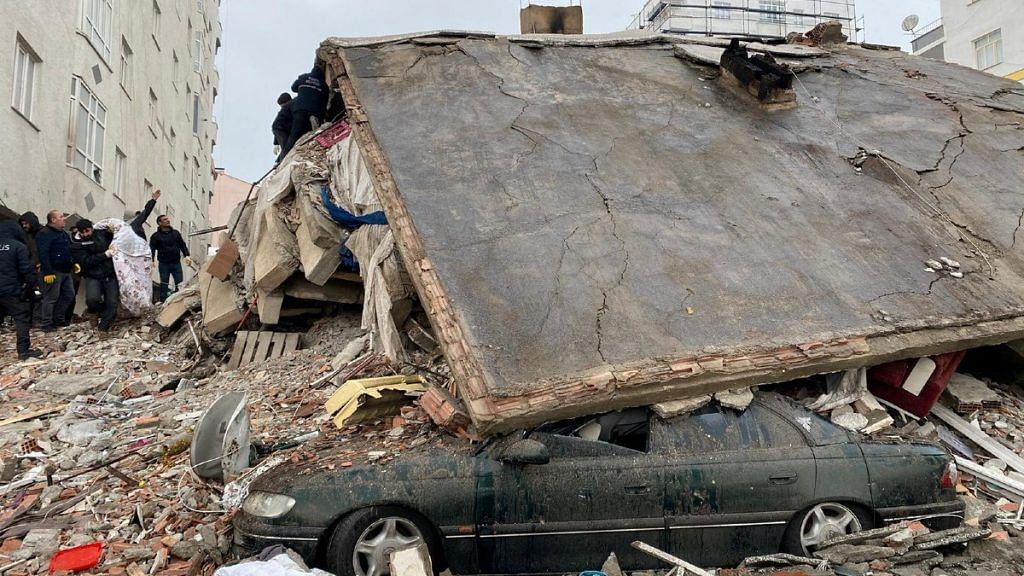The devastating Kahramanmaras double earthquake that struck south-eastern Türkiye and northern and western Syria on 6 February offers an insight into how technology is increasingly supporting short-, medium- and longer-term relief efforts in disaster-stricken areas.
It is difficult to comprehend the scale of the devastation that the two earthquakes, registering 7.8 and 7.5 on the Richter scale, wrought on the area. It is estimated that the devastation spans ten provinces, over more than 50,000 square kilometres, and as of 16 February, the death toll stood at almost 42,000 people. On 15 February, the WHO declared it to be the worst disaster affecting its 53-country Europe region in 100 years. UN Secretary-General António Guterres described it as an “epic natural disaster” at the launch of the first of two emergency appeals for those affected.
It’s difficult to imagine anything worse happening to the millions of people who have been affected. But the relief efforts have at least been significantly helped by digital and emerging technologies.
Emerging technologies have become a staple of disaster relief efforts and have been in use since the early 2000s. What distinguishes the Türkiye-Syria relief efforts is the scale of the usage of open-source websites, AI and social media.
7 innovative uses of technology following the earthquake
Both countries were swiftly offered support, financial donations and solutions from those wanting to help worldwide. Among the innovative uses of technology have been:
-
The use of social media to share vital information and organize support. In some instances, those trapped tweeted messages with their location, sharing them with users who have large followings.
-
A high-pitched whistle app was developed, which those trapped could use to attract attention from their phone.
-
Meta made available a safety check feature allowing individuals to let family and friends know that they were safe – something that the company has been doing for many years.
-
Search and rescue teams (including Türkiye’s AKUT Search and Rescue Association) set up their own WhatsApp helpline to spread information about rescue operations and volunteering.
-
The crypto community raised millions of dollars in donations, offering a real-time financial lifeline in a situation where traditional banking operations were affected – although there have been questions relating to its real-world utility.
-
Spearheaded by the region’s youth, developers set up basic HTML (to make them easier and quicker to load) open-source crisis assistance websites and platforms (some of which have been funded as start-ups). Among these are the creation of heatmaps for rescue services, identifying where survivors are buried with information collated from calls made for help; information about blood donations; links for temporary accommodation providers and those distributing food and clothing; lists (many generated from a lot of scattered data and sorted using AI) of those known to be trapped in the rubble, as well as those in need of urgent humanitarian assistance or medical aid; and apps matching those willing to help with those in need of help.
-
Microsoft Turkiye made all its technologies freely available to those groups operating in the disaster zone. As with previous such disasters, satellite imagery was used to provide a wider view of the affected area. Images helped relief organizations identify the worst-affected areas as well as determine the state of infrastructure, which is critical to ensuring aid is delivered effectively.
Why the focus on technology in the response to this crisis?
The use of technology has been so prevalent in the aftermath of this earthquake for several reasons. The first is that in Türkiye at least, there is flourishing technology scene. Even in the face of restrictions on cryptocurrency usage, the country still ranks 12th globally for crypto adoption and is home to a large pool of tech entrepreneurs and start-ups.
Türkiye has the youngest population in Europe, and largely, though not exclusively, it is the younger generation that is developing the country’s technological base. It is little surprise then that the country’s youth has been at the forefront of helping in relief efforts, employing their technological skills as well as offering help in more traditional forms.
There is also the simple fact that technology has played an increasing role in responding to, assessing and managing disaster relief efforts in the past two decades. What’s happening in Türkiye is, in part, a natural continuation of this.
Technology’s importance over the longer term
Technology will continue to play a vital role in managing this disaster. Further apps are likely to be developed as specific needs arise, including, for example, connecting those in need of assistance with the most relevant aid agency or local group. In terms of crypto usage, blockchain technology will help facilitate monetary aid delivery, creating a transparent and secure means by which to distribute financial support effectively.
Given the successful use of AI to help with basic, but time-consuming tasks, this type of support can be expected to continue. One likely scenario is to use AI-powered chatbots to provide quick and accurate responses to individuals’ queries about relief efforts and assistance programmes. Looking ahead, AI could be used to monitor earthquake-prone areas and create reliable datasets to help predict future incidents, developing models of likely outcome, which in turn, support preparedness mechanisms. It is likely that Metaverse technology will be used to simulate the impact of earthquakes and train people in how to respond to them.
Outlook
Technology is playing an increasing – and increasingly invaluable – role in disaster relief efforts. Whether it’s using AI to filter and analyse a lot of data, using open-access software to create localized solutions, or employing robotics (land or aerial) to support search teams, technology is expediating and magnifying rescue and humanitarian relief efforts, thereby saving lives.
The article originally appeared in the World Economic Forum.
